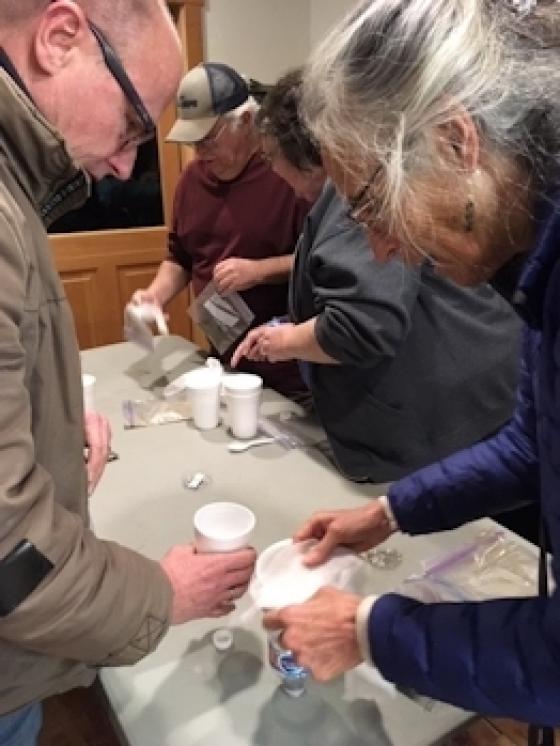
This past week we launched the first in our four-part series on dirt. Our class is full and we're already learning a lot.
Agricultural Coordinator and this year's Conservation Course Coordinator Alyssa Jumars shared 3 Things Students Learned from Class #1, The Basics of Soil Science with Dr. Jeff Bullock, Ph.D of Agricultural Sciences, Wenatchee Valley College:
1) Soil is composed of minerals, organic matter,
water and air. Soil "texture" is determined by the relative
composition of three types of mineral particles: clay, silt, and sand.
2. The texture of soil (the proportion of clay, silt, and sand
particles) affects both the water-holding capacity of a soil, as well
as the "cation-exchange-capacity."
3. Many plant nutrients come in the form of cations
(positively-charged ions). Clay particles and organic matter carry a
negative charge, which allows them to retain nutrients -- such as
positively-charged calcium, magnesium, and potassium. The more clay or
organic matter in a soil, the greater the cation-exchange capacity, or
ability of the soil to hold nutrients.
In March we'll explore the Basics of Soil Biology, Carbon Cycling, and Applied Practices for Improving Soil Health. We'll share what we've learned in next month's E-news!
